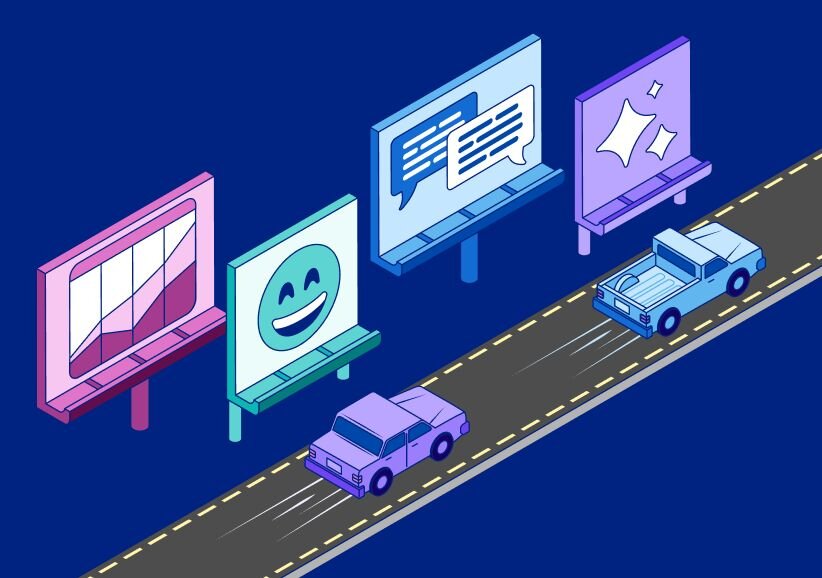Welcome to the latest edition of News You Can Use, CallRail’s regular roundup of the latest news in marketing, technology, and business.
Here at CallRail, we make a point to always stay up-to-date about the latest happenings –– not just because it’s good to be informed, but because it’s also good for business. By staying on top of the news, your business will be well-positioned to weather downturns and make the most of fresh opportunities.
Below, you’ll find summaries of the latest top news stories for our industry, along with a breakdown of how it could affect your business. Let’s dive in:
1) US sets June 11 end date for ‘Net Neutrality’ rules (Reuters)
After months of debate and protest, the United States FCC is set to formally abolish Net Neutrality, with the rules scheduled to expire on June 11. Following this change, internet providers like Comcast and AT&T will have broadly increased powers over how content is served on their networks, and how consumers can be charged for access.
The end of Net Neutrality could have serious ramifications for anyone working at the intersection of technology and marketing. With the formal end of Net Neutrality, ISPs will be free to adopt policies like paid prioritization, content throttling, and ‘digital fast lanes.’ This means most marketers will likely have to pay more to reach the same audience and may see a sharp reduction in the reach of their paid advertising.
Small-to-midsized marketers and ad tech providers beware: The end of Net Neutrality may mean you’re going to have to pay more for your ads in order to remain competitive with the industry’s big players.
2) Google wows with their latest I/O conference (USA Today)
Google stunned the world at its annual I/O conference in Mountain View, California, last week with a presentation focused almost entirely on the tech giant’s forays into artificial intelligence.
Some minor tweaks to the company’s ‘Maps’ and ‘News’ services were announced, but the main event was far and away the unveiling of the new-and-improved Google Assistant. With a speech engine powered by machine learning, the Google Assistant is able to hold down convincing phone conversations with human beings, without them knowing there’s AI on the other end.
Google also announced that its Assistant will soon see additional upgrades related to its under-the-hood AI: You’ll soon be able to browse the internet, watch TV, view videos and photos, and make purchases entirely via voice assistant technology.
Soon, personal assistant apps powered by artificial intelligence will be available on every single laptop, tablet and mobile phone. Businesses would be wise to take note of these developments because savvy firms will reap big rewards by capitalizing on this emerging trend.
3) Walmart buys Indian e-commerce retailer Flipkart in US $16bn acquisition (CNNMoney)
Walmart has struck a deal with Flipkart, India’s largest online retailer, to purchase the e-commerce firm as part of a US $16 billion acquisition. The move represents Walmart’s latest effort to break into the South Asian market, which the Arkansas-based wholesaler has consistently struggled to crack.
“India is one of the most attractive retail markets in the world, given its size and growth rate, and our investment is an opportunity to partner with the company that is leading the transformation of e-commerce in the market,” Walmart CEO Doug McMillon said in a statement.
The deal represents an escalation in Walmart’s war with Amazon for e-commerce dominance. By acquiring Flipkart, Walmart is positioning itself as a major player in one of the world’s fastest-growing markets for online retail.
For e-commerce businesses looking to expand internationally, the battle between Walmart and Amazon points to plenty of untapped opportunity in India.
4) Despite slowing smartphone sales, demand for chips still on the rise (Reuters)
Smartphone sales have slowed slightly in recent months, and analysts were initially concerned that this would have a knock-on effect that would drag down the entire technology sector.
However, the latest reporting on the smartphone industry suggests a different story. Although the smartphone market is cooling in terms of the overall volume of sales, smartphone manufacturers and suppliers are still seeing brisk business thanks to increasing demand for memory and processor chips.
This rise in demand for powerful smartphone components reflects an increased consumer hunger for video, streaming services, and other rich mobile experiences. As if to drive the point home, Apple recently published a report touting that, for the first time ever, the company’s top-of-the-line iPhoneX not only outsold the entire iPhone line but also all other smartphone models worldwide in Q1.
It’s as simple as the law of supply and demand: Even as the number of total smartphone shipments slows down, individual smartphones are using more advanced memory chips with bigger capacity and better performance. For manufacturers, the increase in sales of these expensive components more than makes up for any slowdown in the total number of smartphones sold.
The takeaway for businesses and marketers is a simple one: The mobile market is still hot, and it’s a good bet for advertisers.
5) Serious security flaw discovered in email encryption (Süddeutsche Zeitung / Electronic Frontier Foundation)
Researchers have uncovered a serious security flaw in modern email encryption systems that exposes email messages to hackers — even ones that were sent in the past. Dubbed ‘EFAIL’, this critical vulnerability exposes encrypted emails so they can be read as plaintext.
“Email is no longer a secure communication medium,” Sebastian Schinzel, a professor of computer security at Germany’s Münster University of Applied Sciences, told the German news outlet Süddeutschen Zeitun.
Email is one of the core components of doing business in the modern economy: We send emails for everything from marketing campaigns to discussing sensitive business secrets. If your business uses PGP or S/MIME for email encryption, you should immediately disable it in your email client.
Businesses would also be wise to block all incoming HTML emails entire until this vulnerability is patched — HTML email is one of the main attack vectors for exploiting this vulnerability, according to researchers.
For more on this, the team that uncovered EFAIL set up an explainer website detailing the specifics of the flaw, how your business might be affected, and methods for mitigating risk until EFAIL is fixed.











